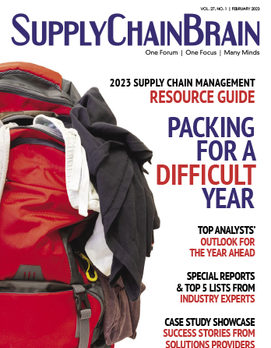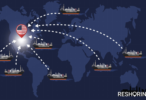
Home » Watch: Why a 4PL Over a 3PL?
VIDEO
Watch: Why a 4PL Over a 3PL?
March 31, 2023
4PLs and 3PLs are not mutually exclusive, says Eric Rempel, chief innovation officer at Redwood Logistics. But 4PLs do have other capabilities that logistics managers might want to tap.
While capabilities of the two models overlap to some degree, Rempel says, a fourth-party logistics provider (4PL) has the execution capabilities of a third-party provider (3PL) “from cradle to grave across your logistics lifecycle, but also above it you have orchestration and total visibility across your digital supply chain.” In other words, a 4PL can manage the activities of a 3PL while also looking at the big supply-chain picture.
More specifically, while the 3PL is about execution, the 4PL is about orchestration. Rempel sees that as “elevating” the way one looks at a supply chain. It’s not just a matter of getting things done, he says. “It means orchestrating events so that when something happens, I want something else to happen to complete the lifecycle journey of my freight, of my supply chain goods, and I want to be able to control it and modify it.”
He sees that as a big evolutionary step. “An organization can say, I'm going to focus more on how I run my business, and I'm going to outsource some of my orchestration capabilities around my supply chain to a partner and work with them around my business strategy, which I'll focus on.”
Without clean real-time data ready to be executed on across the full spectrum of supply chain solutions, technologies and trading partners, an organization only reacts to events, Rempel says. That takes too long, and one misses out on cost savings or revenue opportunities. “If you can move that upwards towards orchestration, where you are prepared for events to take place, you get notification of them digitally, and you immediately act digitally,” he says. People work on exceptions, “and it's another level of profitability.”
RELATED CONTENT
RELATED VIDEOS
Subscribe to our Daily Newsletter!
Timely, incisive articles delivered directly to your inbox.
Popular Stories

2023 Supply Chain Management Resource Guide: Packing for a Difficult Year
VIEW THE LATEST ISSUECase Studies
-
JLL Finds Perfect Warehouse Location, Leading to $15M Grant for Startup
-
Robots Speed Fulfillment to Help Apparel Company Scale for Growth
-
New Revenue for Cloud-Based TMS that Embeds Orderful’s Modern EDI Platform
-
Convenience Store Client Maximizes Profit and Improves Customer Service
-
A Digitally Native Footwear Brand Finds Rapid Fulfillment



